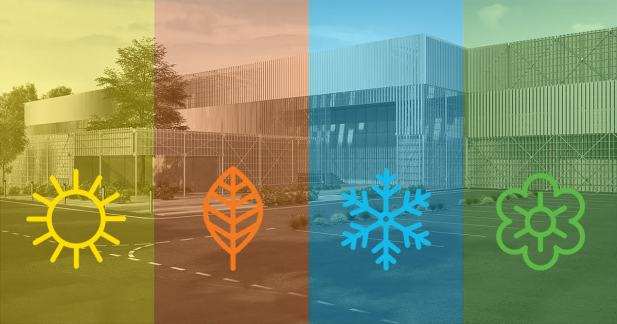
Start now for best price and lead time on your next commercial construction project
Pro tip: Start design by October for best price and lead time
Spring of 2021 may seem like a long way away, but if you’re planning to break ground on a commercial construction project in 2021, now is the time to plan the series of activities required before you can gather golden shovels for the groundbreaking ceremony. Here are four seasonal aspects of your commercial construction project that can directly impact your project budget and schedule.
4 timing aspects impacting commercial construction project budget and schedule
Plan review and permitting lead time
Many states and municipalities require a state-level plan review and approval before the plans can be submitted to the local municipality for their plan review and issuance of a building permit. The lead time for state plan reviews can vary from four to 12 weeks depending on the time of year.
So what’s the sweet spot for submitting plans? Opt to submit near the holiday season, and you could experience a shorter plan review lead time. Waiting and submitting in late spring or early summer will likely result in an extended plan review lead time, which can have a direct impact on the timing of your project’s groundbreaking. Be aware of the timing of the design phase of your project so that your project doesn’t get delayed by an extended plan review and permitting process. Beginning the design phase in early October will position you well for keeping your schedule.
Material lead time
Nearly every commercial construction project has material and equipment components that are accompanied with a lead time for shop drawings, fabrication and delivery of the respective material or equipment (think steel joists and deck, precast panels, electrical switchgear, mechanical equipment, etc.).
The lead time for materials and equipment fluctuates based upon the time of year, and generally follows the seasonal construction demand. Placing material and equipment orders mid-winter can result in shorter lead times, while placing orders mid-summer can result in much longer lead times. Be cognizant of the timing of design and vendor bidding phases of your project so you can take advantage of shorter material and equipment lead times and maintain your project schedule.
Vendor availability
Currently, the construction market is booming, and workforce labor is tight, so paying attention to the availability of subcontractor and supplier vendors is especially important to maintain your project budget and schedule. The availability of vendors fluctuates based upon the time of year, and generally follows the seasonal construction demand. Most vendors are pursuing work for the upcoming construction season during the fall and winter months prior, with many having bellies full of project work by the time the spring construction season hits. Timing the design and bidding phase of your project so vendor bidding can take place early-winter can give you a leg up on vendor pricing and schedule availability.
Adverse weather conditions
Fall and winter 2021 seem like a long way off, but planning weather-dependent activities for your 2021 project now can save time and money in the long run. Develop an overall schedule now to plan for the installation of weather-dependent site improvement activities (curb and gutter, asphalt paving, landscaping, etc.) and weather-dependent exterior building improvement activities (masonry/stone, exterior finish systems, painting, etc.). Starting your project in spring, in lieu of summer, may provide a better opportunity to complete these work activities without the need for premium time scheduling or special phasing that can add more time and cost overall to your project.
Plan well in advance for a smooth commercial construction project
Overall, if it’s your goal to start your commercial construction project in the spring of 2021, it’s best to kick off the design phase of your project around early October. Bottom line: with a bit of preplanning, you can take advantage of ideal permitting, material and equipment lead times as well as favorable vendor pricing.